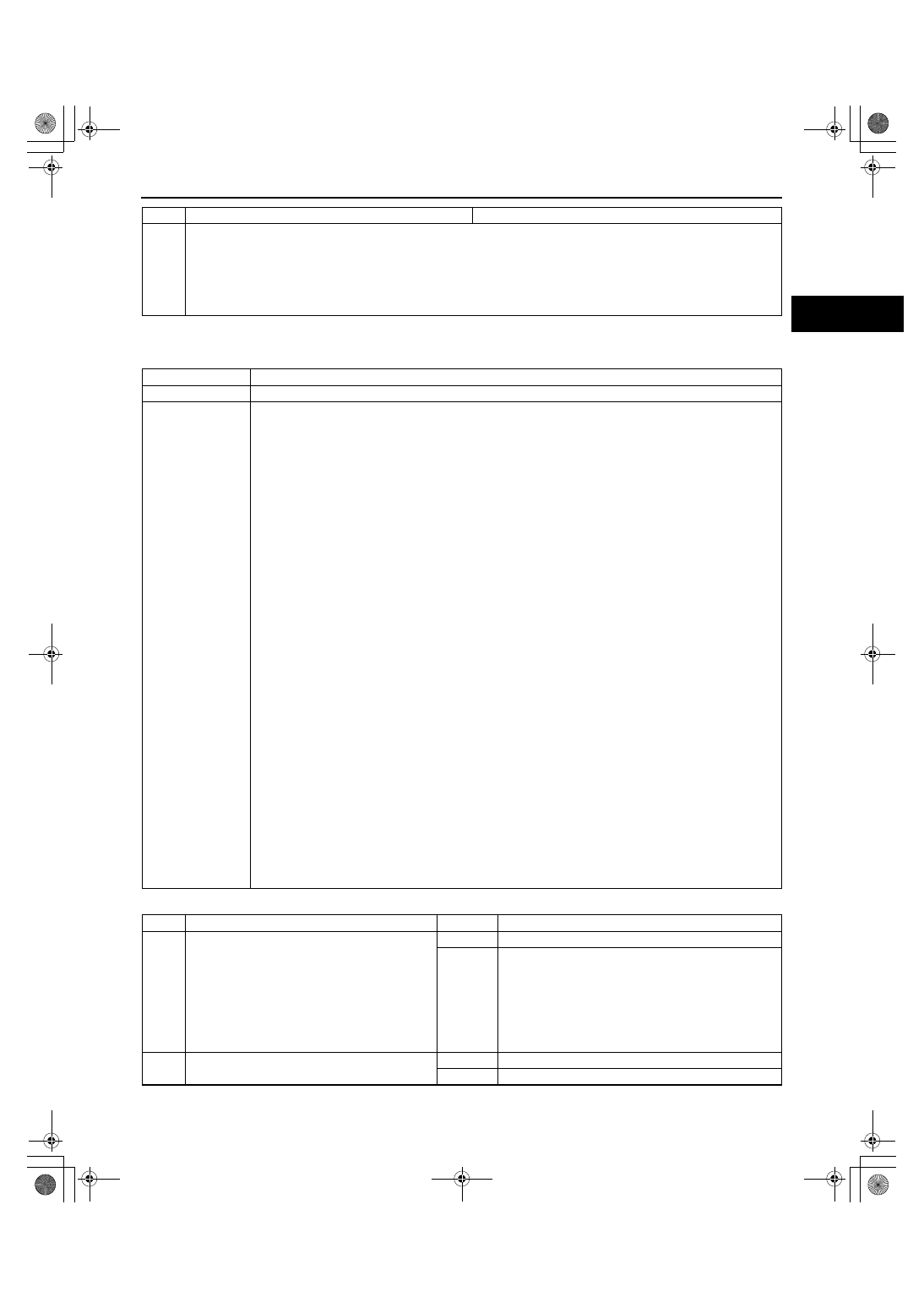Mazda CX 7. Manual - part 94

SYMPTOM TROUBLESHOOTING [L3 WITH TC]
01-03–73
01-03
End Of Sie
NO.29 SPARK PLUG CONDITION[L3 WITH TC]
id010339803600
Diagnostic procedure
3
Verify test results.
• If normal, return to the diagnostic index to service any additional symptoms.
• If a malfunction remains, inspect the related Service Bulletins and/or On-line Repair Information and perform the
repair or diagnosis.
— If the vehicle is repaired, troubleshooting is completed.
— If the vehicle is not repaired or additional diagnostic information is not available, reprogram the PCM if a later
calibration is available. Retest.
STEP
INSPECTION
ACTION
29
SPARK PLUG CONDITION
DESCRIPTION
Incorrect spark plug condition
POSSIBLE CAUSE
Note
• Inspecting the condition of the spark plugs can determine whether a problem is related to a
specific cylinder or possibly all cylinders.
Wet/carbon stuck on specific plug:
• Spark— Weak, not visible
• Air/fuel mixture— Excessive fuel injection volume
• Compression— No compression, low compression
• Malfunctioning spark plug
Grayish white with specific plug:
• Air/fuel mixture— Insufficient fuel injection volume
• Malfunctioning spark plug
Wet/carbon is stuck on all plugs:
• Spark— Spark weak
• Air/fuel mixture— Too rich
• Compression— Low compression
• Clogging in intake/exhaust system
Grayish white with all plugs:
• Air/fuel mixture— Too lean
Warning
The following troubleshooting flow chart contains the fuel system diagnosis and repair
procedures. Read the following warnings before servicing the fuel system:
• Fuel vapor is hazardous. It can easily ignite, causing serious injury and damage. Always
keep sparks and flames away from fuel.
• Fuel line spills and leakage are dangerous. Fuel can ignite and cause serious injuries or
death and damage. Fuel can also irritate skin and eyes. To prevent this, always complete
“BEFORE REPAIR PROCEDURE” and “AFTER REPAIR PROCEDURE” described in this
manual.
(See01-14-4 BEFORE REPAIR PROCEDURE[L3 WITH TC].)
(See01-14-4 AFTER REPAIR PROCEDURE[L3 WITH TC].)
Caution
• Disconnecting/connecting the quick release connector without cleaning it may possibly
cause damage to the fuel pipe and quick release connector. Always clean the quick release
connector joint area before disconnecting/connecting, and make sure that it is free of
foreign material.
STEP
INSPECTION
RESULTS
ACTION
1
Remove all the spark plugs.
Inspect the spark plug condition.
Is the spark plug condition normal?
Yes
Troubleshooting completed.
No
Specific plug is wet or covered with carbon:
Go to the next step.
Specific plug looks grayish white:
Go to Step 9.
All plugs are wet or covered with carbon:
Go to Step 11.
All plugs look grayish white:
Go to Step 19.
2
Is the spark plug wet/covered with carbon from
engine oil?
Yes
Inspect all areas related to oil.
No
Go to the next step.
1871-1U-06B(01-03).fm 73 ページ 2006年3月15日 水曜日 午前10時36分